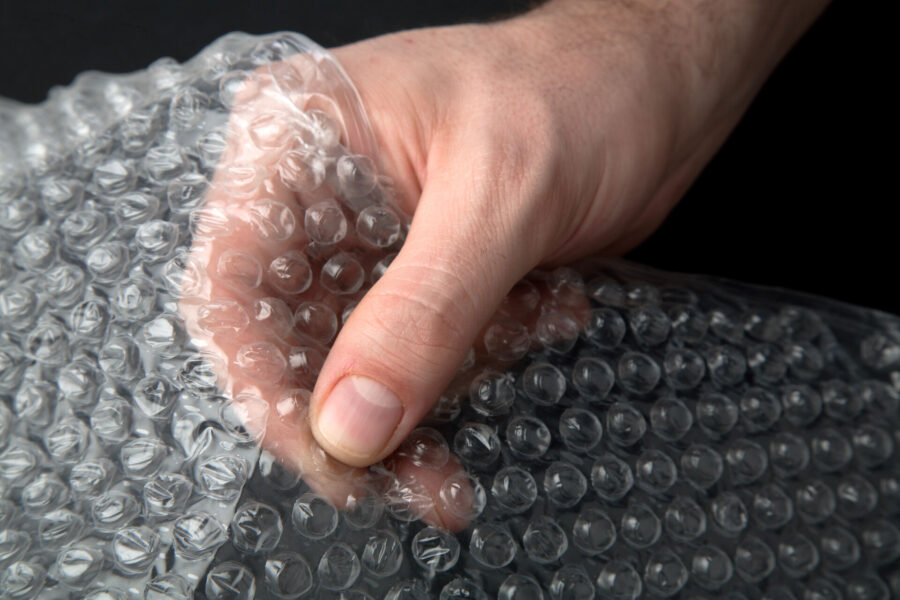

Step-By-Step Guide on How to Move a Fish Tank
Posted in How-to,Moving Tips & Tricks on August 8, 2023
Are you planning to relocate and wonder how to move a fish tank without stressing out your aquatic companions? We have a solution for you. Our comprehensive step-by-step guide is here to help. Moving an aquarium can be a delicate and challenging process, but with the right approach and careful preparation, you can ensure a smooth transition for your underwater pets. From small home aquariums to large tanks, our expert tips will ensure fish’s safety and well-being throughout the journey.
How to move an aquarium when moving house? To safely relocate an aquarium, you need to ensure your fish’s well-being by transferring them to a temporary aquarium with original water, emptying the tank, packing equipment securely, and transporting it cautiously in sturdy containers.
Step 1 – Preparing for the Move
Relocating with pets requires good preparation, whether you are relocating with dogs, cats, or fish. You need to make this transition for your beloved pets easy and stress-free, and you need to make sure they adjust to the new environment as fast as possible. Relocating the aquarium is not easy, not only because the aquarium itself is fragile and breakable but because your fish must be transported with utmost care.
So the key aspect of moving an aquarium from house to house is researching and understanding your fish species’ specific requirements and assessing the new location for aquarium placement. Thoroughly research the individual needs of your fish, considering factors like water temperature, pH levels, and compatibility with tankmates. This knowledge will help you plan the setup and environment in the new location to ensure your aquatic friends’ comfort and well-being.
Additionally, assess the available space and conditions in the new home to determine the best position for your aquarium, taking into account factors such as lighting, temperature stability, and ease of maintenance.
Gathering the Necessary Supplies and Materials for the Move
Whether you are packing dishes or electronics, one of the key aspects to efficient packing is to have appropriate packing materials. Be sure to have sturdy containers or buckets to transport your fish safely, along with soft nets for gentle handling. For packing the aquarium accessories, use bubble wrap or packing paper to ensure their protection and sealable bags for any plants or small decorations.
Having the right supplies on hand will make the process smoother and provide your aquarium and its inhabitants with the care and security they need during the relocation to a new state.
Step 2 – Emptying the Tank
Organizing packing for a move can be a hard and overwhelming task. You need to go through all the items you own and decide what to keep, what to sell, and what to get rid of. And aside from downsizing, you need to clean all the items you plan to bring as well as your home. So no matter whether you are packing clothes, books, or some old electronics, you need to start with preparation on time.
The same rule is when dealing with your aquarium. To be efficient in your relocation, you have to start with preparation on time. And the first thing you need to do is to empty your aquarium and prepare your fish for transportation.
Gradually Reducing the Amount of Food Given to the Fish Before the Move
Before you empty the water from the aquarium, you need to prepare your fish for transport. Reducing the amount of food given to them is a crucial step in preparing them for the transition. Over a few days, gradually decrease the quantity of food to avoid excessive waste in the aquarium. By doing so, you’ll help maintain water quality and prevent any potential spikes in ammonia levels during the relocation process. Careful observation of your fish’s behavior and appetite will guide you in adjusting the feeding schedule accordingly.
Preparing Clean, Treated Water to Use During the Tank Transfer
As part of the tank-emptying process, it’s essential to prepare clean and treated water for the fish during their transfer. Begin by dechlorinating tap water and ensuring it matches the temperature and parameters of the existing aquarium water. Having a sufficient amount of conditioned water on hand is crucial in case of any water changes or emergencies during the relocation. This prepared water will provide a familiar and safe environment for your fish, reducing stress and promoting their well-being.

Step 3 – Disassembling the Fish Tank
Now that you have done all the other preparation, it is time to disassemble your aquarium. If you are afraid to pack fragile items, you can hire long-distance movers to do this task for you. Some companies, like Cross Country Movers, offer partial packing services to their clients; with this option, you can choose what items you wish professionals to pack and pack the rest of them yourself.
Start by unplugging and removing any electrical equipment, such as filters, heaters, and lights. Safely pack these items, ensuring they are well-protected for transportation.
Next, gently remove plants, decorations, and substrate, placing them in appropriate containers to avoid damage. Empty the remaining water, using buckets or a siphon, and keep a small amount of the original aquarium water to preserve beneficial bacteria. Disassembling the aquarium with precision will make the reassembly process easier at your new location, ensuring your aquatic friends remain comfortable and secure throughout the relocation. Take a look at this video for more tips on how to disassemble the tank.
Step 4 – Packing and Protecting the Tank Components
The next step to learn how to pack an aquarium for moving is proper packing and protection of its components are crucial. Disassemble all parts of the aquarium with care, starting by cleaning and drying each component thoroughly before packing. Wrapping fragile items like the tank lid or light fixtures with protective materials will prevent any damage during transit.
Securely packing all the aquarium elements in sturdy boxes or containers will ensure they remain safe and intact, making the process of reassembling the aquarium at the new location much smoother.
Cleaning and Drying the Tank Components Before Packing
Before packing the aquarium components, it’s essential to clean and dry them meticulously. Remove any debris, algae, or sediment from the glass, decorations, and accessories. Ensuring everything is dry will prevent the growth of mold or mildew during transportation on a truck. Take extra care with filtration media, ensuring it stays moist in tank water to preserve beneficial bacteria. Clean and dry aquarium components will be easier to pack and protect, keeping your aquarium items in pristine condition for the relocation.

Wrapping Fragile Items, Such as the Tank Lid or Light Fixtures, With Protective Materials
Fragile components, such as the aquarium lid, light fixtures, and delicate decorations, require special attention during packing. Wrap these items carefully with protective materials like bubble wrap, soft towels, or packing paper to cushion them against potential impacts. Securing these fragile elements will prevent breakage and ensure they reach your new home in excellent condition, ready to be reassembled and used for your aquarium setup.

Securing All Packed Items in Sturdy Boxes or Containers for Transportation
After packing and protecting the tank components, it’s crucial to secure them properly in sturdy boxes or containers designed for transportation. Use appropriate packing materials to fill any gaps and prevent shifting during transit. Label the containers clearly, indicating their contents and any necessary handling instructions. A well-organized and secure approach will safeguard your aquarium belongings throughout the journey, ensuring everything is readily available when it’s time to set up your aquarium in its new home.

Step 5 – How to Move a Fish Tank
Now that preparation is done, it is time to learn how to move an aquarium. Ensuring the aquarium is properly balanced and stable for lifting is of utmost importance. Distribute the weight evenly by removing any heavy objects, such as rocks or large decorations, and keeping the tank’s center of gravity low.
For larger tanks, consider using a dolly or enlisting additional help to avoid straining yourself and prevent accidents. When transporting the aquarium to its new location, handle it with care to avoid excessive shaking or impact that could stress the fish or damage the tank. Keeping a steady and gentle approach during the cross-country moving process will help maintain a safe environment for your aquatic friends and ensure a successful relocation.

Step 6 – Setting Up the Fish Tank at the New Location
The key tasks in unpacking the tank at the new location involve cleaning the aquarium and its components before reassembly, installing and reconnecting all equipment and accessories, and gradually acclimating the fish to their new environment. Start by thoroughly cleaning the tank, decorations, and accessories to remove any residue from the relocation. Once cleaned, reassemble the tank and carefully install all the equipment, ensuring everything is functioning correctly.
Gradually introduce your fish to their new home by acclimating them to the water conditions over a period of time. Patience and attentiveness during this process will help your aquatic companions adjust smoothly to their new surroundings, ensuring their well-being and happiness in their fresh aquatic habitat.

Avoid All Troubles by Hiring Cross-Country Movers to Help You
Moving across the country demands an immense amount of hard work and logistical planning, from finding a new place to live and work to handling various obligations like transferring health insurance and other practical tasks. With so much on their plate, it’s no wonder that people often opt to hire professional cross-country moving services. By entrusting the expertise of professionals, individuals can delegate some of the most challenging tasks, allowing them to focus on other important aspects of the relocation with peace of mind.
Among the myriad of tasks that professionals can assist with, moving cross-country of an aquarium is one that requires particular care and attention. Hiring experienced cross-country movers ensures that the delicate process of moving an aquarium is handled with precision and expertise.
From disassembling the tank and securely packing its components to carefully transporting it to the new location, professionals can navigate this specialized task, ensuring the safety and well-being of the fish. By relying on experts to handle their aquarium relocation, clients can rest assured that their aquatic companions will be in capable hands, granting them the freedom to focus on other essential responsibilities and enjoy a smoother transition to their new home.
Follow Our Instructions and You’ll Move the Tank in No Time
With our step-by-step instructions, the long-distance moving of your fish tank can be a smooth process. However, if you want to avoid all the troubles, contact Cross Country Movers for professional assistance.
Our experienced team knows how to handle aquarium relocations with care and precision. Focus on settling into your new home while leaving the delicate task of moving your aquatic pets’ home to us. Your aquatic companions deserve a safe journey with you, and we’re here to make that easier. Don’t hesitate to reach out; let’s make your cross-country relocation and aquarium relocation stress-free and successful.
FAQ
How Long Can Fish Survive in Temporary Containers During the Move?
Fish can typically survive in temporary containers for several hours, depending on the container’s size and the fish’s species. It’s essential to maintain a stable and suitable environment with proper aeration and water quality during this time.
What is the Best Way to Acclimate Fish to the New Tank?
The best way to acclimate fish to their new tank is by slowly introducing them to the water conditions. Gradually mix small amounts of the new tank water into their temporary container over a period of time before transferring them to the tank.
Can I Move the Tank With Water and Fish Still Inside?
While it’s possible to move a tank with water and fish, it’s not recommended for long-distance moves. Partially draining the tank, securely packing the fish, and transporting them separately in well-maintained containers is safer and reduces stress.
How Do I Maintain the Water Temperature During Transportation?
To maintain the water temperature, use insulated containers, blankets, or heat packs during colder weather. In warmer conditions, use cooling packs or keep the containers shaded to avoid overheating.
Should I Replace the Filter Media After Moving the Fish Tank?
It’s generally recommended to replace filter media that may have been contaminated during the move to ensure efficient filtration. However, it’s essential to retain some media or introduce beneficial bacteria to maintain the tank’s balance.
What Precautions Should I Take to Prevent Fish Stress and Injuries During the Move?
Minimize sudden movements and keep the fish containers stable. Use soft, fine-mesh nets for handling and avoid overcrowding. Maintain water quality and provide a stress-reducing additive or medication if necessary.
Can I Move a Saltwater Aquarium Using the Same Steps?
Yes, similar steps can be followed for a saltwater aquarium. Ensure to maintain proper salinity levels and acclimate the fish gradually to avoid shock.
What Signs Should I Watch for to Ensure the Fish are Adjusting Well After the Move?
Observe normal behavior, appetite, and breathing patterns. Any signs of distress, abnormal swimming, or loss of appetite could indicate stress, and adjustments may be needed to ensure their well-being.







